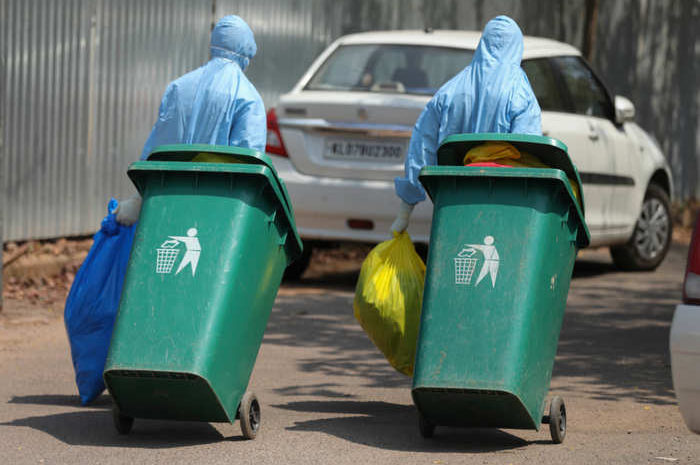Biomedical waste poses a threat to global public environmental health, especially in low- and middle-income countries such as Bangladesh. It is estimated that globally, at least 5.2 million people (including 4 million children) die every year from diseases related to untreated medical waste. 1 Considering the spread of severe acute respiratory syndrome coronavirus 2 (SARS-CoV-2) globally, very serious biomedical waste has become a major new threat to public health and the environment. Improper hospital waste disposal may aggravate the spread of SARS-CoV-2 among medical staff and waste disposal personnel.
Bangladesh was already struggling with poor management of medical waste before the COVID-19 pandemic, and now the sudden increase in the amount of medical waste has hit Bangladesh hard. In Bangladesh, there are approximately 654 government hospitals and 5,055 private hospitals and clinics, with a total of 141-903 beds, plus 9061 beds in diagnostic centers, all of which result in the generation of large amounts of biomedical waste. In Dhaka, the capital of Bangladesh, the average amount of medical waste generated is 1.63–1.99 kg per bed per day. 3 By April 2020, due to COVID-19, 4, the national medical and health care has produced at least 14-500 tons of waste, 4 which has undoubtedly increased due to the increase in the infection rate. In addition, Dhaka alone generates an average of 206 tons of medical waste every day due to COVID-19. 5 This poorly managed waste poses a huge environmental threat, and may cause long-term and harmful public health hazards, and become a potential source of reuse. -Infection occurs.
In Bangladesh, despite the introduction of the “Medical Waste Management and Disposal Rules” in 2008, a safety system has not been developed to manage the daily medical waste generated by hospitals, clinics and households. The waste generated inside hospitals in Bangladesh is usually untrained, without any protection, unconscious cleaning staff collect unsorted, and are processed in unauthorized places without any isolation or proper treatment. 6 Approximately 40,000 informal waste collectors working across the country are very likely to be cleared of SARS-CoV-2 infections because they work without adequate protection. 7 If the used masks, gloves and other personal protective equipment are not properly managed and disposed of, there may be a serious risk of spreading SARS-CoV-2. In addition, household waste (such as tissues, masks, gloves) increases the health risks of waste managers.
In Bangladesh, hospital waste is mainly managed by city companies, third-party organizations and non-governmental organizations. However, the capabilities of these stakeholders do not meet the requirements of an appropriate, environmentally safe medical waste disposal mechanism. The strategic level paradigm needs to be transformed into a strategic, up-to-date medical waste management system. Failure to address the surge in medical waste during COVID-19 may expose Bangladesh to further environmental and public health risks.
We declare that there is no conflict of interest. The Bengali translation of this letter can be found in the appendix. We thank the research researchers Ismail Hosen, Firoj Al Mamun and Mehedee Hasan of the Undergraduate Research Organization (Sawa, Dhaka, Bangladesh) for their assistance in Bengali language translation.





